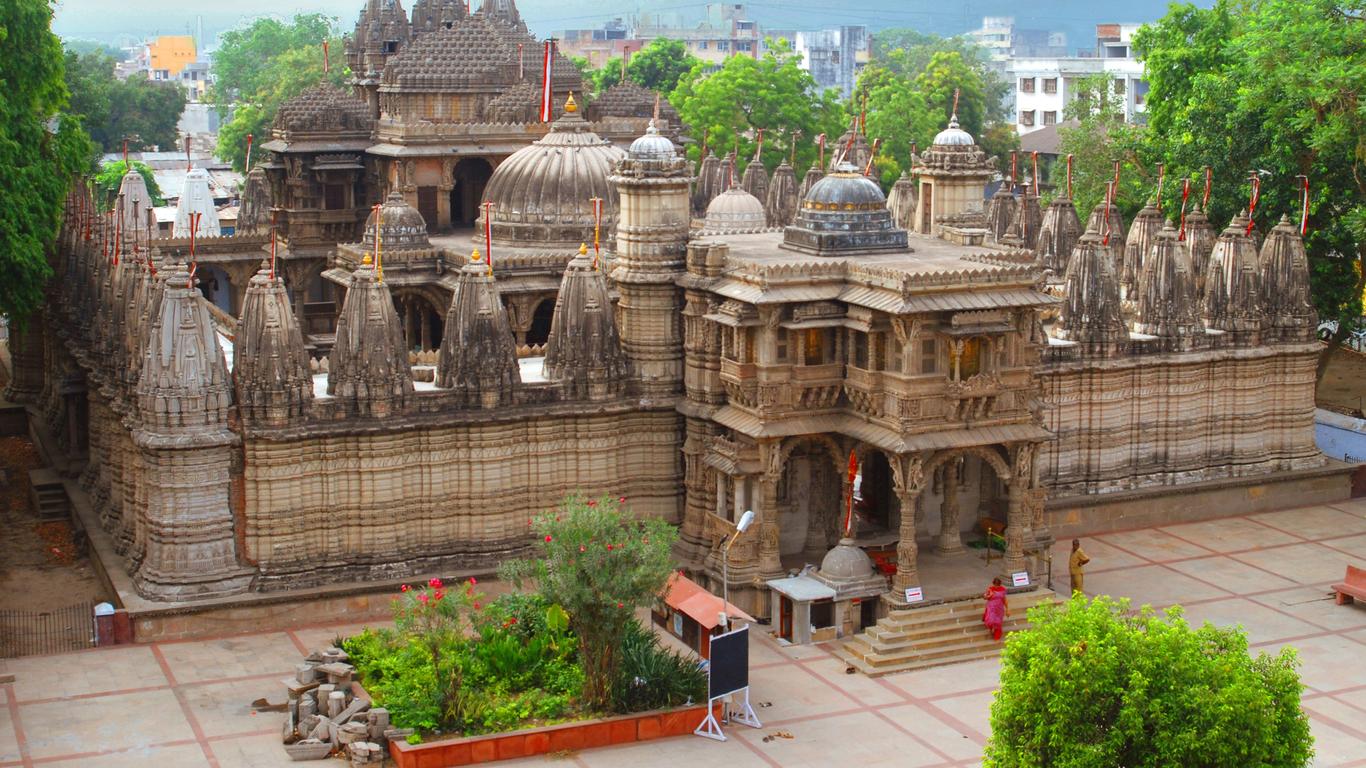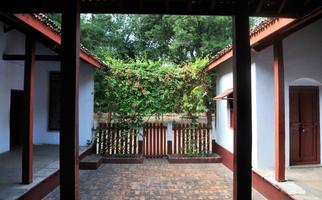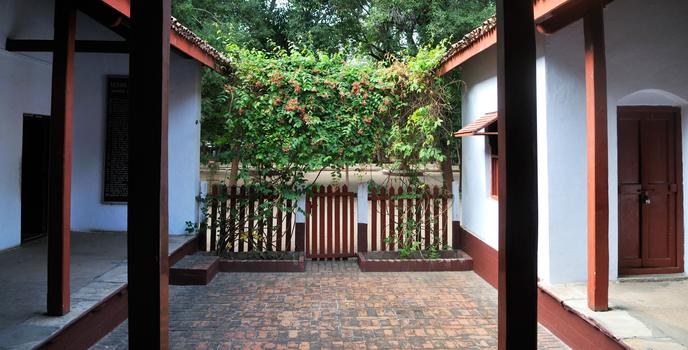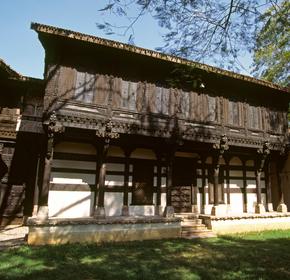1. Sabarmati Ashram: The Home of Modern India
One of India's most important spiritual, political, and historical sites, the Sabarmati Ashram was home to the country's founding father, Mahatma Gandhi, for 12 years. During the 1920s and 30s, this was the nerve center for the struggle for Indian independence, which is why the modern nation has made it a national monument. See Gandhi's modest cottage, the prayer grounds where he used to meet followers and tour the fascinating museum, with objects that belonged to the great man, educational exhibits, and much more.
2. Jama Masjid Mosque: A Domed Delight
Occupying a huge area of central Ahmedabad, the Jama Masjid is a spectacular religious hub. Built in 1424 by sultan Ahmad Shah I, it centers around a 75 by 66 meter courtyard which is ringed by elegant columned walkways, prayer niches, halls for contemplation and worship, and 15 stunning domes. As with all mosques, visitors are always asked to remove their shoes and respect the sanctity of the site. When you do, you'll instantly feel relaxed and serene in one of India's most beautiful settings.
3. Calico Museum of Textiles: A Museum that Really Weaves a Spell Over Visitors
Ahmedabad's history is inseparable from that of textiles. In the 19th century, Gujarat's textile industry expanded rapidly, as the volume of cotton exported from Ahmedabad earned it the nickname "The Manchester of India". You'll find out why at the engaging Calico Museum of Textiles. Situated in the northern part of the city, the museum features outstanding (and beautiful) Indian textiles made for the Mughal royal court, but goes further too, with miniature paintings, bronzes and other works of art. It's a feast for anyone with an interest in fashion and fabrics.
4. Swaminarayan Temple: A Magnificent Mandir
After you've seen Ahmedabad's Jama Masjid, why not head over to its spiritual sister, the Hindu Swaminarayan Temple? Just a short hop over the river from Gandhi's ashram, the temple is a gorgeous confection of teak wood, gold details and stone, with elegant archways and carvings that will take your breath away. Don't miss the wooden facade of Haveli, a home within the temple complex. And, if you have the time, be sure to take the heartwarming Heritage Walk from the Swaminarayan Temple to the Jama Masjid. A unique communal initiative, it celebrates the city's inter-religious harmony - something we can all get behind.
5. Kankaria Lake: Recreation and Relaxation at the Water's Edge
Kankaria Lake is modern Ahmedabad's entertainment and relaxation nexus. Recently redeveloped by the city government, the lakefront area attracts huge crowds to its restaurants, zoo, water park, natural history museum, walking trails, toy train and activities like aqua carting. There's a whole zone allocated for youngsters (Kids City), which features meticulous miniaturized replicas of city buildings, as well as the Balloon Safari. If you have a stomach for heights, the 350 feet ascent offers outstanding views of the city.











